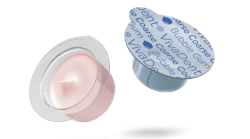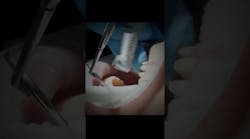Seventh-generation bonding agents
Editor's Note: This month launches a new partnership between Dental Assisting Digest and THE DENTAL ADVISOR, one of the most trusted sources for product information. Every month, you'll be able to read about new product innovations through these articles, and I'm thrilled to have THE DENTAL ADVISOR as one of DAD's newest resources. As a note, here's a special offer just for DAD readers, from THE DENTAL ADVISOR and DAD ... http://www.dentaladvisor.com/subscribe/welcome-dental-assisting-digest-readers.shtml.
Since their introduction in 1955, dental bonding agents have evolved from no-etch to total-etch (fourth- and fifth-generation) to the more recent, self-etch systems (sixth- and seventh-generation). The newest adhesive system, seventh-generation, combines the acid, primer, and bond in one bottle, which requires a single step with no mixing or etching.
What is a seventh-generation bonding agent?
Adhesives for bonding direct and indirect restorative materials to teeth have evolved through the years. Variations in the number of bottles and the mechanism of bonding have defined each "generation" of bonding systems. The seventh-generation combines the acid, primer, and resin in one bottle. These materials involve only a single step, which eliminates separate etching, rinsing, and mixing for the light-cured products.
Ideal features of a seventh-generation bonding agent:
- High bond strength (20-30 MPa) to enamel and dentin
- Thin film thickness to ensure complete seating of restorations
- Fluoride-releasing to prevent onset of secondary caries
- Delivery option, bottle or unit-dose
- Tolerant to moist and dry environment
- Radiopaque, easier to differentiate adhesive layer from recurrent caries
- Minimizes postoperative tooth sensitivity
- Little to no margin discoloration over time
- Available in light-cured and dual-cured formulations
- Good shelf life
Advantages:
- One-step procedure, no mixing or rinsing the tooth
- Delivery option, bottle or unit-dose
- Less postoperative sensitivity
- Tolerant to moist or dry environments
- Available in light-cured and dual-cured formulations
Disadvantages:
- Some need refrigeration
- Decreased shelf life due to acidic formulation
Addressing clinical issues
Bond strength
Bond strengths of seventh-generation bonding agents are similar to previous generations of adhesives if they are used according to the manufacturer's instructions. As with any category of dental materials, some products have better properties than others. Therefore, it's important to read nonbiased literature and research articles that help you make an informed decision. In general, if you are bonding an anterior restoration with a large bulk of enamel, you may want to use a total-etch bonding agent. However, if you are restoring a posterior tooth with exposed dentin and cut enamel margins, you can be confident using a high-quality seventh-generation bonding agent with your composite.
Bonding to uncut enamel: To etch or not
The self-etching bonding agents (sixth- and seventh-generation) use acidic monomers that etch and prime dentin. These monomers are also able to etch cut enamel, but some may not be strong enough to adequately etch uncut enamel. Phosphoric acid is a better etchant of uncut enamel. Therefore, if you're using a sixth- or seventh-generation product and bonding uncut enamel, it's probably safest to etch the uncut enamel area of your preparation with phosphoric acid, or "cut" the enamel with a diamond bur before bonding.
Bonding to deep dentin
Even with improvements in adhesives, various clinical factors can adversely affect bond strength. Bond strengths to enamel and superficial dentin are typically greater than that to deep dentin. However, Xeno IV DC bonded well to deep dentin.
| Ground Enamel | Deep Dentin | Superficial Dentin |
| 20 MPa | 18 MPa | 25 MPA |
Decreased postoperative sensitivity
There is usually less postoperative sensitivity associated with the self-etching adhesives (sixth- and seventh-generations) than with the total-etch systems (fourth- and fifth-generations). The self-etching products demineralize with an acid and prime the dentin with hydrophilic resin simultaneously in a one-step procedure that dissolves the smear layer without exposing the dentinal tubules. Thus, there is no potential to etch the dentin deeper than the primer will absorb. With the total-etch systems, phosphoric acid is used to demineralize dentin. In a separate step, a primer is applied to the demineralized dentin. So, there is potential for a layer of weak demineralized dentin below the dentin that has been penetrated by the primer. This layer of wet, collapsed collagen can potentially cause a weak adhesive layer, thus causing microleakage.
Dual-cured seventh-generation bonding agents
Light-cured seventh-generation bonding agents are not compatible with dual- and self-cured composite cores and resin cements. The dual-cured seventh-generation bonding agents (Clearfil DC BOND, Futurabond DC, Xeno IV DC) solve this problem.
Overdry or overwet teeth
Most seventh-generation bonding agents have water as a solvent. Thus, the wetness or dryness of the tooth surface is less critical than it is with bonding agents with solvents containing ethanol or acetone.
Contaminants: saliva, blood
Research on tooth substrates contaminated in vitro with human saliva or human blood showed that bonding agents based on acidic primers were less sensitive to these contaminants. It is recommended that heavily contaminated tooth surfaces be rinsed with water and the bonding agent be reapplied.
Storage stability
The instructions for many seventh-generation bonding agents recommend refrigeration. Increased time and temperature of storage can reduce stability, which can eventually lead to gelation or degradation of the bonding agent.
Mechanism of action
Seventh-generation bonding agents use the smear layer as a bonding substrate. The acidic primer demineralizes the smear layer and the top layer of the underlying dentin surface. The acidic primer also infiltrates the exposed collagen along with the hydrophilic monomers, which then copolymerize. Because the etched surface is not rinsed, the demineralized smear layer is incorporated into the hybrid layer. The hybrid layer ranges in thickness from 0.5 um to 5 um.
The acidic primer and adhesive monomers also infiltrate collagen fibers as the primer decalcifies the inorganic component in dentin to the same depth, which should minimize voids, potential leakage, and postoperative sensitivity.
To read more, including Clinical Tips, Characteristics of Different Generations of Bonding Agents, and THE DENTAL ADVISOR'S Survey of Clinical Consultants, visit www.dentaladvisor.com.

